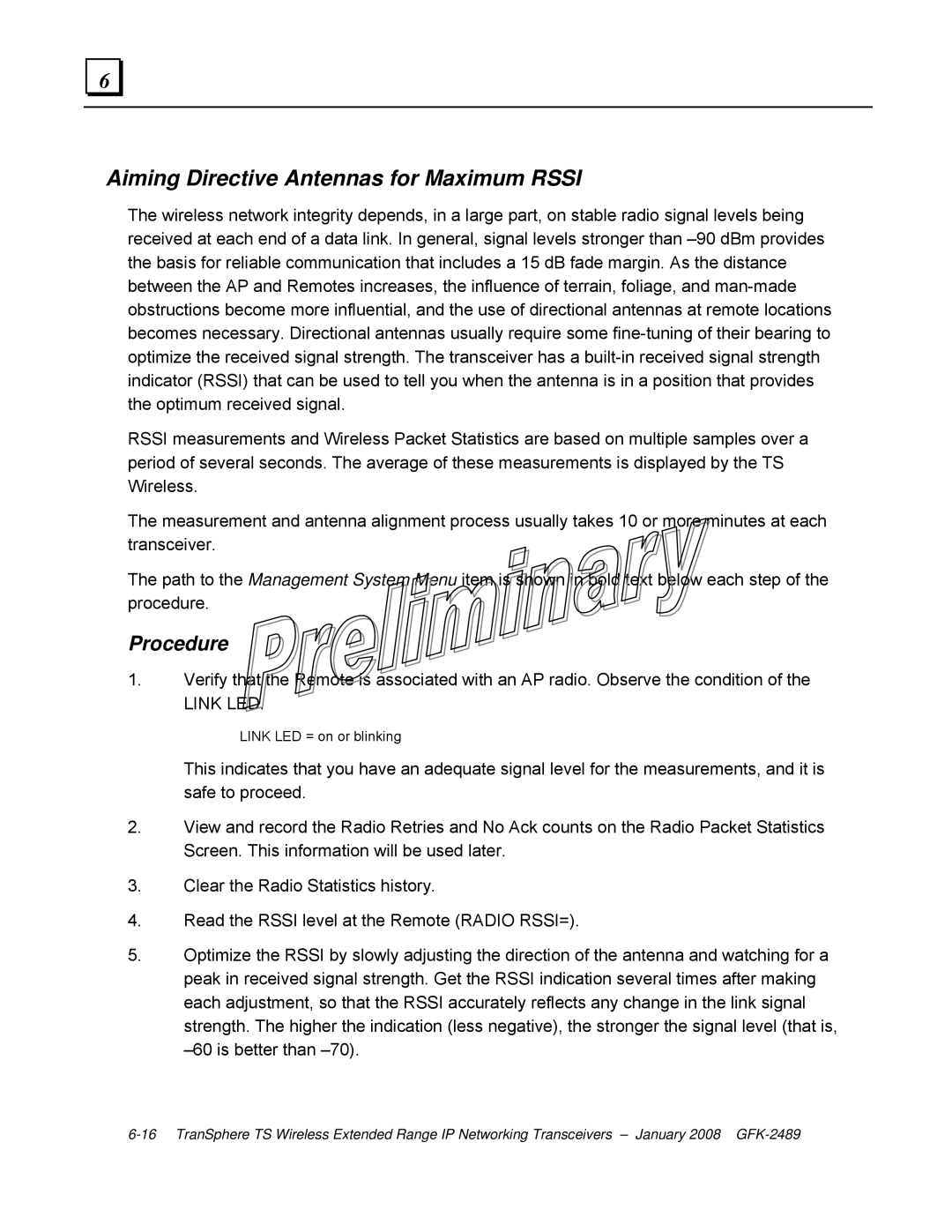
6 |
Aiming Directive Antennas for Maximum RSSI
The wireless network integrity depends, in a large part, on stable radio signal levels being received at each end of a data link. In general, signal levels stronger than
RSSI measurements and Wireless Packet Statistics are based on multiple samples over a period of several seconds. The average of these measurements is displayed by the TS Wireless.
The measurement and antenna alignment process usually takes 10 or more minutes at each transceiver.
The path to the Management System Menu item is shown in bold text below each step of the procedure.
Procedure
1.Verify that the Remote is associated with an AP radio. Observe the condition of the
LINK LED.
LINK LED = on or blinking
This indicates that you have an adequate signal level for the measurements, and it is safe to proceed.
2.View and record the Radio Retries and No Ack counts on the Radio Packet Statistics Screen. This information will be used later.
3.Clear the Radio Statistics history.
4.Read the RSSI level at the Remote (RADIO RSSI=).
5.Optimize the RSSI by slowly adjusting the direction of the antenna and watching for a peak in received signal strength. Get the RSSI indication several times after making each adjustment, so that the RSSI accurately reflects any change in the link signal strength. The higher the indication (less negative), the stronger the signal level (that is,
